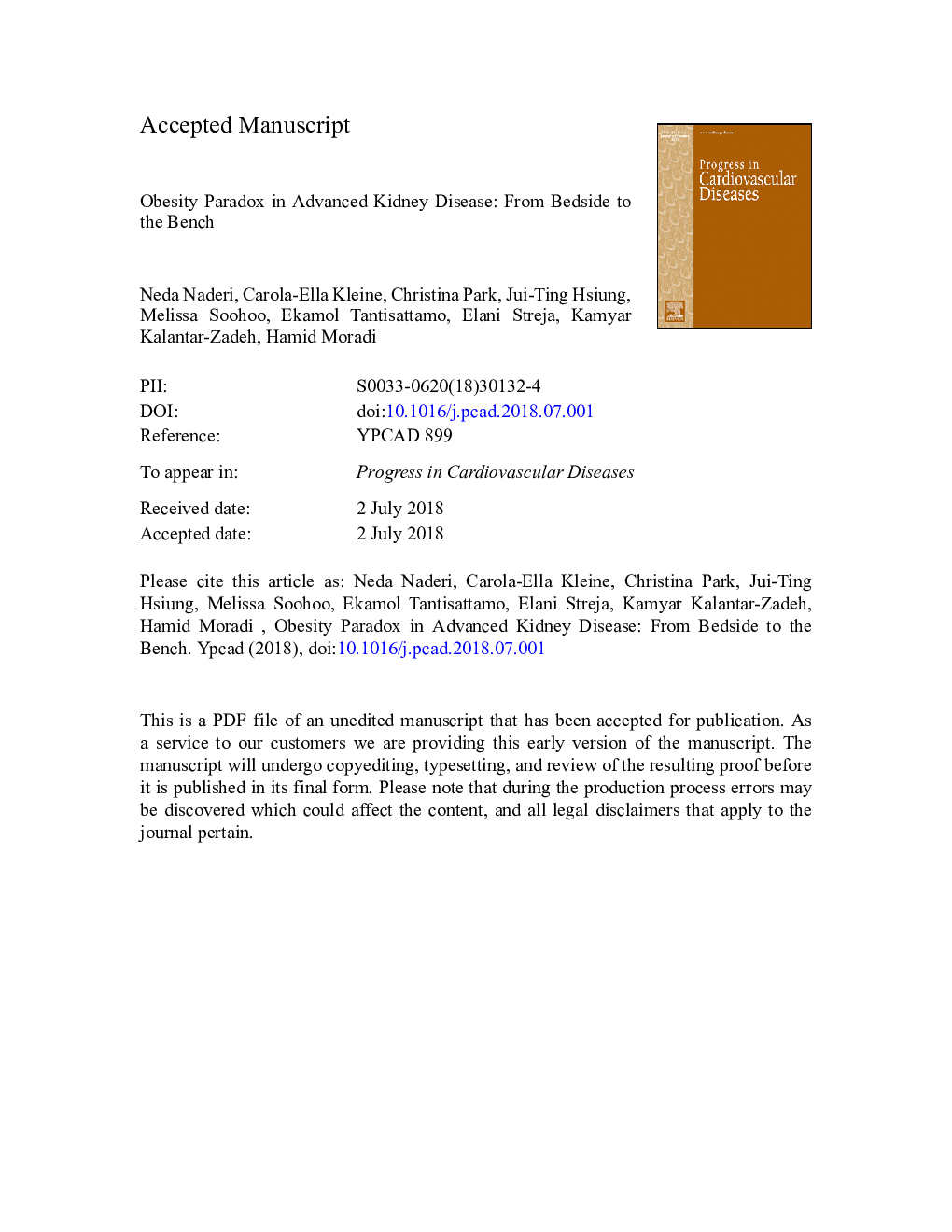| Article ID | Journal | Published Year | Pages | File Type |
|---|---|---|---|---|
| 8963252 | Progress in Cardiovascular Diseases | 2018 | 55 Pages |
Abstract
While obesity is associated with a variety of complications including diabetes, hypertension, cardiovascular disease and premature death, observational studies have also found that obesity and increasing body mass index (BMI) can be linked with improved survival in certain patient populations, including those with conditions marked by protein-energy wasting and dysmetabolism that ultimately lead to cachexia. The latter observations have been reported in various clinical settings including end-stage renal disease (ESRD) and have been described as the “obesity paradox” or “reverse epidemiology”, engendering controversy. While some have attributed the obesity paradox to residual confounding in an effort to “debunk” these observations, recent experimental discoveries provide biologically plausible mechanisms in which higher BMI can be linked to longevity in certain groups of patients. In addition, sophisticated epidemiologic methods that extensively adjusted for confounding have found that the obesity paradox remains robust in ESRD. Furthermore, novel hypotheses suggest that weight loss and cachexia can be linked to adverse outcomes including cardiomyopathy, arrhythmias, sudden death and poor outcomes. Therefore, the survival benefit observed in obese ESRD patients can at least partly be derived from mechanisms that protect against inefficient energy utilization, cachexia and protein-energy wasting. Given that in ESRD patients, treatment of traditional risk factors has failed to alter outcomes, detailed translational studies of the obesity paradox may help identify innovative pathways that can be targeted to improve survival. We have reviewed recent clinical evidence detailing the association of BMI with outcomes in patients with chronic kidney disease, including ESRD, and discuss potential mechanisms underlying the obesity paradox with potential for clinical applicability.
Keywords
EGFRESRDAmerican Society of Transplant SurgeonsF/UDOQIaSTSDOPPSUSRDSCorrPEW3-hydroxy-3-methyl-glutaryl-coenzyme ADEXAHMG-CoAMSMREENIRLBM95% CIUcp1Dialysis Outcomes Quality InitiativeVeterans AdministrationResting energy expenditureMRIstandard deviationUnited States of Americacardiovascular diseasechronic kidney diseaseEnd-stage renal diseaseMagnetic resonance imagingFollow-upLean body masscomputed tomographyUncoupling protein-1dual energy X-ray absorptiometryRelative riskWaist circumferencePeritoneal dialysisCVDDAGyearsUnited States Renal Data Systembody mass indexBMIUnited Network for Organ Sharing95% confidence intervallow density lipoproteinLDLmarginal structural modelend stage renal diseaseObesityMortalityestimated glomerular filtration rateheart failureCKDDialysis Outcomes and Practice Patterns Study hazard ratioodds ratioProtein energy wastingHemodialysisObesity paradoxKidney transplantCachexiaDirected acyclic graph
Related Topics
Health Sciences
Medicine and Dentistry
Cardiology and Cardiovascular Medicine
Authors
Neda Naderi, Carola-Ellen Kleine, Christina Park, Jui-Ting Hsiung, Melissa Soohoo, Ekamol Tantisattamo, Elani Streja, Kamyar Kalantar-Zadeh, Hamid Moradi,
